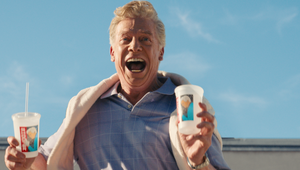
Rethinking HFSS Readiness: A Strategic Reckoning, Rather than a Compliance Challenge

In what was expected to be a landmark shift for UK food and beverage advertising, the rollout of the HFSS (High Fat, Salt, Sugar) regulations has been pushed to January 2026. The delay may feel like a reprieve, but for forward-thinking brands, it’s a final boarding call - not a snooze button.
In a market where economic headwinds prevail, the impact of the regulations in their current state would be profound. We estimate that more than 30% of media spend would need to be re-invested. Primetime media would skyrocket. Customer acquisition costs would further rise. If you can’t advertise on a product level, how do you reasonably launch new ones? And if small businesses (under 200 employees) don’t have to adhere to the regulations; how can others possibly compete with emerging consumer tastes and preferences?
Modernise Product Portfolios
In the long-term, diversifying portfolios needs to be the outcome. Consumer tastes are undoubtedly changing and doubling down on healthier alternatives will provide a trajectory for growth. Healthy gateway products can be used to amplify product messaging, with less healthy products playing a supporting role on owned channels. A deep 1:1 understanding of your consumers and their propensity to switch into healthier spaces is critical.
Incubating start-ups will allow brands to nurture less healthy propositions and rapidly build a brand presence before ultimately acquiring and scaling into their business. While CPGs have been doing this for some time with mixed success, a new scaled approach will be required, with global market intelligence, new operating models and outcome driven alliances with partners.
Develop new engagement ecosystems
In a more regulated HFSS world, the most valuable media isn’t paid—it’s proprietary. Leading brands will need to invest in content platforms and first-party ecosystems that earn attention, build loyalty, and operate outside of regulation. We’re increasingly seeing brands turn to gaming platforms that blend immersive experiences alongside gamification to achieve such results.
Lower funnel loyalty is likely to enjoy a golden era in an HFSS landscape. Capturing audiences with differentiated propositions will allow brands to maintain salience and launch new less healthy products. Successful loyalty platforms will double down on advocacy initiatives to switch high value customers into social activation engines.
Paid influencer endorsements will be out, but influencer experiences will become the focus for achieving earned reach. Influencer loyalty is becoming a battleground that winning brands pioneer in.
Meanwhile, Connected Packaging will become a core channel that acts as a gateway into your digital experiences. With manufacturing and packaging line complexity starting, this journey now, will set brands up for success in 2026.
Finally, measurement will be reimagined. The old playbook - more spend, more shelf, more share, is unlikely to survive. Brands will need to start to focus on longer term customer measures, such as customer life-time value, customer satisfaction and brand advocacy that reflect customer loyalty not volume of sales.
So yes, HFSS has been delayed, but the clock is still ticking, and January 2026 is just around the corner. The winners of tomorrow won’t just follow the rules, they’ll reshape them.















